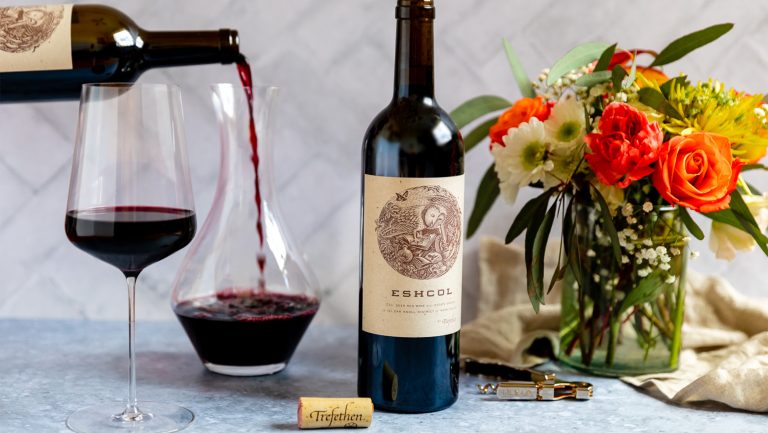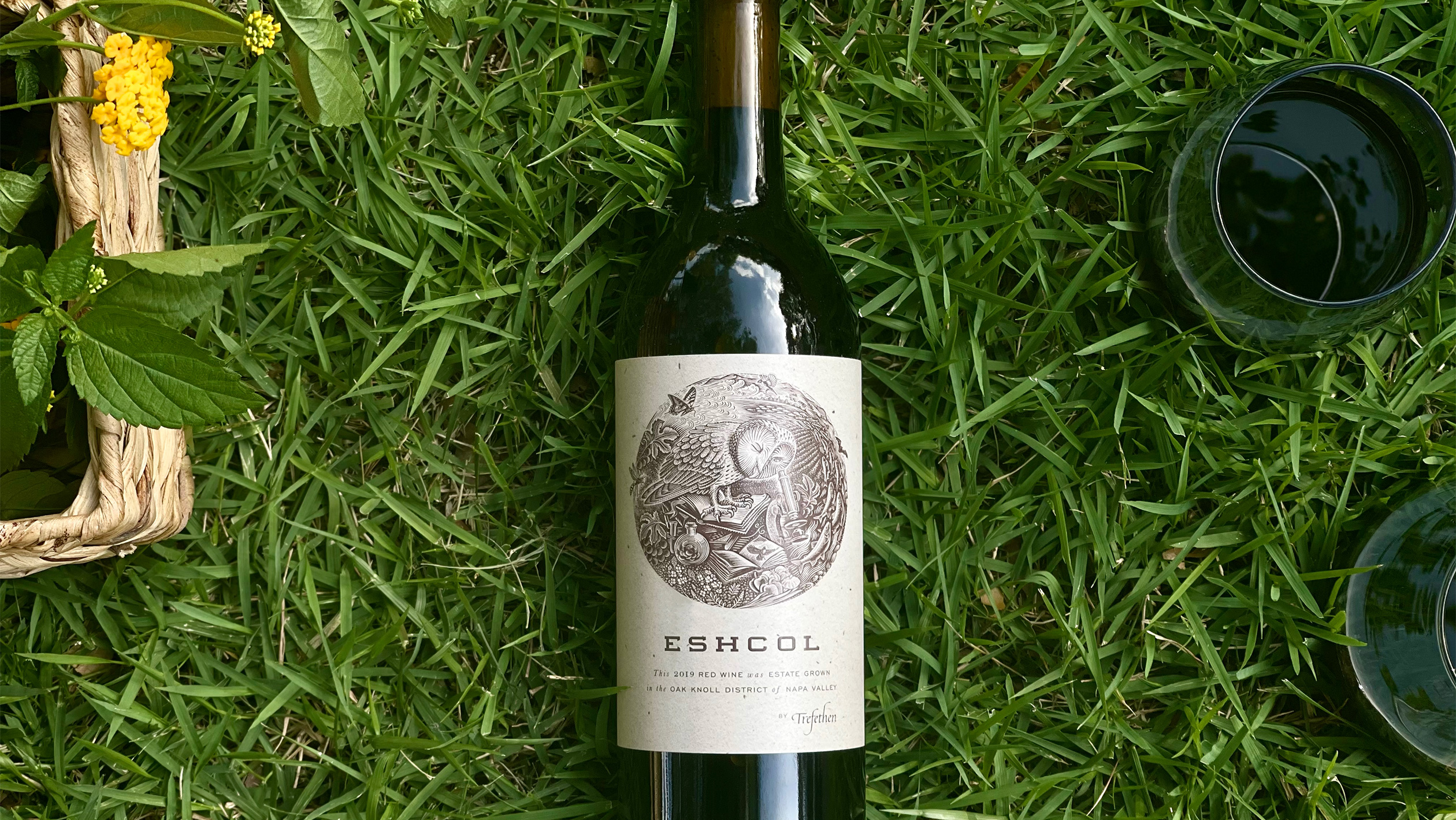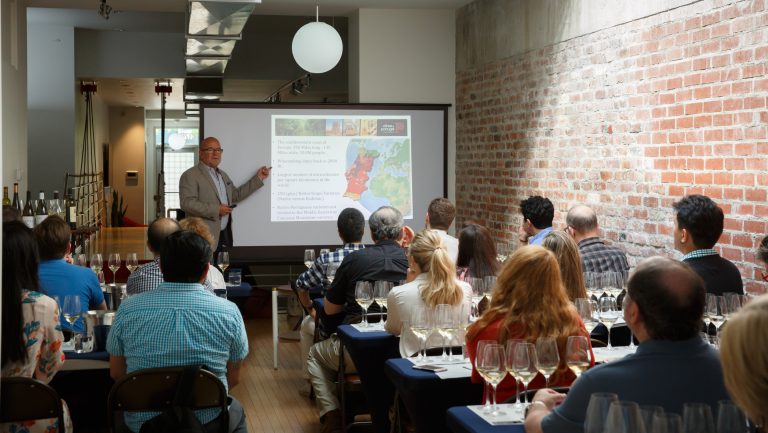This advertising content was produced in collaboration with our partner, Trefethen.
Try, if you can, to imagine the Napa Valley of 1968, the year local legend Eugene Trefethen purchased and restored the historic Eshcol Ranch to found Trefethen Family Vineyards. A far cry from the world-famous wine region that first launched U.S. wine onto the global stage, at the time, the area was still a rural farming community containing fewer than 25 wineries—a mere fraction of the 400-plus properties that currently populate the area today.
Over the decades to come, having released its first commercial wine in 1973 under the leadership of John and Janet Trefethen, the Oak Knoll District-based winery would emerge as one of Napa’s iconic family estates, playing a pivotal role in the rise of Napa Valley and the birth of American fine wine. Today, as Trefethen transitions to the future with third-generation siblings Lorenzo and Hailey Trefethen at the helm, the family’s pioneering spirit is coming full circle.
Introductory, but Not Entry-Level
Driven by the same forward-thinking vision that inspired their parents and grandparents, the siblings recently launched a fresh era for the winery with the unveiling of their new Eshcol label–the latest addition to the family’s acclaimed lineup of sustainably farmed, estate-grown wines. Named after the property’s original winery (built in 1886, it claims a unique place in California history as a major award-winner at the 1889 World’s Fair in Paris), this red blend pays homage to the estate’s storied past while looking ahead to the generations to come.

Don’t miss the latest drinks industry news and insights. Sign up for our award-winning newsletters and get insider intel, resources, and trends delivered to your inbox every week.
With its $30 price tag, Eshcol will be the estate’s introductory wine, positioned underneath the single-varietal Signature series and Legacy Collection. Hailey is quick to point out that although Eshcol is meant to offer a “more approachable” side of Trefethen, the new release is anything but entry-level. Sourced entirely from estate-grown fruit and produced with the same dedication and care that manifests across Trefethen’s full range of wines, it signals an effort to introduce drinkers to the estate not through the lens of a single variety but as a composite whole.
“Fans of ours can go out and explore each of our varietal wines in-depth, but we decided that if we wanted to capture a broader audience and give them a sense of who we are, then we needed to stand back a bit and introduce them to the entire estate,” she explains. “So the approach we took with Eshcol was trying to look at this entire ecosystem we have nurtured here on our land, using grapes that come from all over the property.”
Consisting of 50 percent Cabernet Sauvignon and 44 percent Merlot, with the remaining portions coming from Petit Verdot, Malbec, and Cabernet Franc, the wine certainly succeeds in that mission. Opening with generous aromas of black currant and cherry and delivering a balanced mouthful of red berries and plum with fine tannins and a balancing core of acidity, Eshcol Red provides the experience of one of Napa’s benchmark estates at an extremely affordable price point.
“It shares a lot of the same characteristics that make all of our wines so great, including that characteristic brightness from our cool climate in the Oak Knoll District, but in a slightly more accessible, earlier-drinking package,” Lorenzo explains.
A New Chapter for a Sustainability Legacy
Beyond extending an exceptional value to the consumer, Eshcol represents the next chapter of an evolving philosophy of sustainability that has guided Trefethen from the start and continues to this day. A profound commitment to sustainability has always been at the heart of Trefethen’s farming and production philosophy, stretching as far back as the complex drainage network Gene Trefethen installed upon founding the winery to maximize water conservation.
In recent years, led by Lorenzo and Hailey’s efforts to consider sustainability across all aspects of the winery’s operations, Trefethen has only increased its dedication to these founding principles, participating in two separate sustainable certification programs: the Napa Green initiative and the statewide certification from the California Sustainable Winegrowing Alliance. From its groundbreaking decision to offset 100 percent of its electricity usage with on-site solar power to its various efforts to promote biodiversity in the vineyard, as well as its social commitment to its workforce, the family continues to serve as a model for social and environmental responsibility and the thoughtful stewardship of the soil.
“Over the years, we have realized that everything on the property is interrelated,” says Lorenzo. “We’re always looking at all the repercussions of decisions that we make and figuring out how they impact the larger cycle so that everything we do is sustainable. It’s not even a question for us; it’s just who we are and what we do.”
This vision is reflected on Eshcol’s label and the packaging itself. The front label incorporates many aspects of the estate’s unique terroir and history, highlighting their ecological awareness through a focus on the rich diversity of wildlife that exists on the property, starting with its central image of a barn owl and extending to the various insects, fish, and plant life that also call the property home. In keeping with the estate’s ethos of conservation and environmentalism, the bottle comes without any foil capsule and is sealed with natural cork, a carbon-fixing material.
As the natural evolution of Trefethen’s lifelong mission, the new Eshcol bottling is perfectly positioned to introduce the next generation of drinkers to this Napa Valley icon, paving the way for an even brighter future as one of the industry’s top green leaders. After all, as Hailey puts it, the work of a true pioneer is never over; instead, it involves a continuous commitment to evolution and change.
“When it comes to sustainability, the one thing I’ve learned is that it’s an ongoing process and a journey,” she says.“Our goal as a family is to pass on what we have to the next generation in at least as good a shape as we found it, but hopefully better.”

Dispatch
Sign up for our award-winning newsletter
Don’t miss the latest drinks industry news and insights—delivered to your inbox every week.










